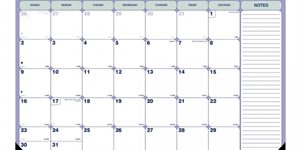Desk calendars have a long and fascinating history, evolving over the centuries to become the functional and stylish tools we use today. In this blog post, we will take a journey through the history and evolution of desk calendars.
Ancient Beginnings: The concept of timekeeping and calendaring dates back to ancient civilizations such as the Egyptians, Mayans, and Babylonians. These early calendars were often based on lunar or solar cycles and played a crucial role in agricultural and religious activities.
Medieval Manuscripts: During the Middle Ages, illuminated manuscripts featured intricate calendar pages that included important dates, saints’ feast days, and astronomical information. These illuminated calendars were precursors to modern desk calendars.
Printed Desk Calendars: The advent of printing technology in the 15th century allowed for the mass production of calendars. Desk calendars became popular among scholars, merchants, and the general public for keeping track of appointments and important dates.
Art Deco and Modern Designs: In the 20th century, desk calendars underwent a design transformation. Art Deco influences brought a sense of style and aesthetics to calendar design, making them not just functional but also decorative pieces for the workspace.
Digital Age Adaptations: With the rise of digital technology, desk calendars have adapted to the times. Many now include digital features such as QR codes, smartphone syncing, and even augmented reality elements.
Today, desk calendars continue to be a staple in many offices and homes, offering a blend of tradition and modernity. Their rich history and adaptability make them more than just scheduling tools; they are pieces of functional art that have stood the test of time.













